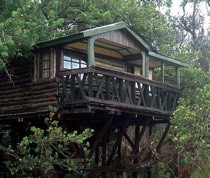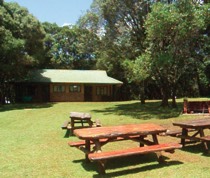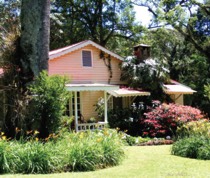Kakamega Forest
Kakamega, the last remnant of the huge forest that grew across Africa, is a lush green world filled with incredible species not seen elsewhere. The forest deserves multiple visits, and will surprise you each time.
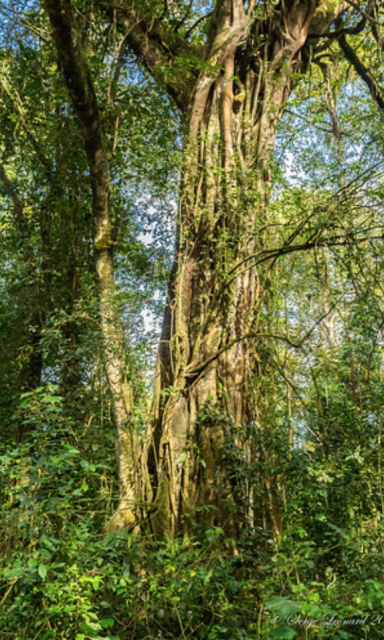
I will never forget my first visit to Kakamega Forest. Entering the forest, I stepped into a different world. The denseness of undergrowth, the kaleidoscope of smells, the symphony of noises, the confusion of movement. The air was dank and soaked into my skin. The foliage was alive, shifting and shivering around me. I had never seen so many shades of green, fluid tones all flowing into each other. Gazing up into the distant canopy, it was almost impossible to tell one tree from the next. Buttresses, vines, branches and creepers formed a sinuous green web. It seemed the air itself was singing: birdsong, monkey hoots, tree creaks, animal snorts – a living cacophony. And everything moved. Was that a bird flashing between the leaves? Did a monkey sail through the treetops? Or was it the leaves quivering against distant branches?
The forest is the last remnant of the Guineo-Congolian Rainforest. Straddling the equator and stretching the whole way across Africa, this forest originally extended from the Atlantic Ocean through the Congo, Rwanda, Burundi and Kenya. While a forest so immense had of course a wide variety of species, there were some defining factors that characterised it: it was mostly at an altitude of below 1,000m and had an annual rainfall of between 1,600 to 2,000mm. The vast swathes of forest were tall, dense and lush, with a thick canopy.
A wide range of factors caused the forest to disappear. Political unrest, logging, mining and climate change all played their part. The forest edges retreated, it’s centre unravelled, until like a receding tide it drew back into this lush and enigmatic forest in Western Kenya.
Perhaps because of this, Kakamega Forest is home to high numbers of endemic species, giving it critical levels of biodiversity. Of the 380 plants in the forest, there are 60 species of fern and 150 of trees and shrubs. The 170 species of flowering plants include 60 orchids of which nine are endemic to the forest. There are also little but lovely waterfalls, and a couple of lookouts.
The creatures that live in the forest are not only rare, but have curious shapes, bizarre features and picturesque names. The potto, a small nocturnal animal with huge eyes and tiny ears, has opposable thumbs it uses for climbing high in the trees. Also resident are the delightfully named giant forest hedgehog, hammer headed fruit bat, clawless otter and De Brazza’s monkey. Cat species include civet, genet and serval – although deep in the speckled shade of the undergrowth, these dappled creatures are almost impossible to spot.
The highlight of the forest is undoubtedly the birds: flashes of iridescent colour flitting through the leaves, disappearing before you can identify them. Of the 367 species recorded here, at least nine are endemic to the forest. So colourful are many of them that their colours are woven into their names: white spotted flufftails, black and white casqued hornbill, blue shouldered robin chat, great blue turaco, as well as the gloriously-named hairy breasted barbet.
I wasn’t sure I wanted to run into a black lipped cobra or a rhinoceros horned viper – both ‘attractions’ of the forest – but I couldn’t help being drawn irresistibly into its depths. I walked with a bird guide – highly recommended. His local knowledge proved invaluable in picking out the birds skimming through the brush as we followed paths that wove between the trees. The forest, teeming with species, is alive with impressions. There’s so much to be aware of here it’s hard to take everything in. Kakamega Forest is not for a single visit. This is a place to come back to again and again.
Tamara Britten, 12 January 2020
Published also in: Travelog Magazine: The Standard
About the region
Western Kenya
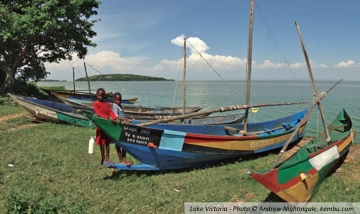
Mountainous and fertile Western Kenya is blanketed in lush green plantations of famed Kenyan tea. At its western edge, the region meets Lake Victoria, the source of the Nile. Other highlights include Mt Elgon, Kakamega Forest National Reserve, Ruma National Park, Saiwa Swamp National Park, Cherangani Hills and Kerio Valley.
Read more about Western KenyaWhere to stay
Saiwa Swamp National Park, Kenya’s smallest national park, provides the setting for this unique house. Tree Top House is named for its location in a tree inside the park. The house is owned by Kenya Wildlife Service, KWS. The house is a single unit, ...
Kapkuro Bandas are self-catering cottages located in Mt Elgon National Park, 1km from Chorlim Gate. They are owned and managed by Kenya Wildlife Service, KWS. There are 2 cottages, with 2 self-contained bandas in each cottage. Each banda has 1 bedroom furnished with double and single bed. There ...
Rondo was built by a saw miller at the base of a towering Elgon Olive in 1948, and left to the Christian Council of Kenya in 1961. In 1966, the Trinity Fellowship took over and ran it as a youth centre and orphanage. Now a hospitable homestead, it ...
